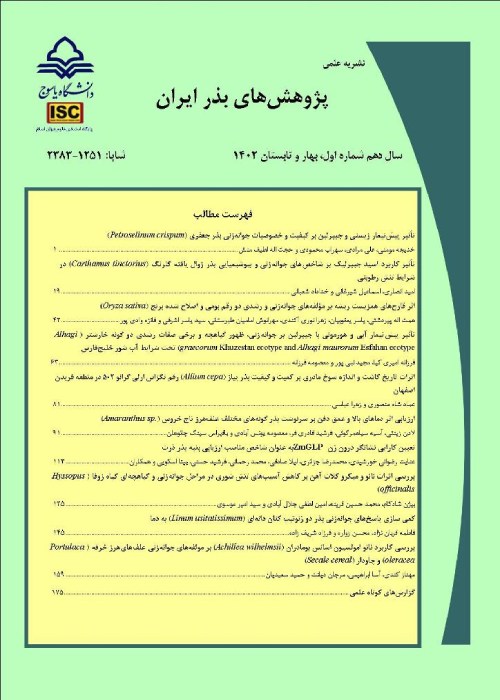Evaluation of Primary Conditional Dormancy in Seeds of Oilseed Rape (Brassica napus) Produced in Golestan and Mazandaran Provinces
Conditional dormancy (CD) is a dynamic state between dormancy (D) and nondormancy (ND). Seeds at the conditional dormancy stage germinate over a narrower range of temporal conditions. Conditional dormancy is usually observed in seeds with physiological dormancy. However, primary conditional dormancy has also been seen in some freshly harvested seeds. The purpose of the present study was to investigate whether freshly harvested oilseeds have non-dormancy or conditional dormancy.
A factorial experiment was conducted based on a completely randomized design with four replications at Seed Technology Laboratory of Aburaihan Campus, University of Tehran, Iran, in 2018. In this experiment, seeds of rapeseed were collected from 20 different locations in Golestan and Mazandaran provinces. Following that, a germination test was carried out at different temperatures (5, 15, 20, 30, 35°C), and the germination percentage and seed germination rate were recorded. In order to break seed dormancy, two treatments were used: gibberellic acid and after-ripening. For after-ripening treatment, seeds were stored in a paper bag in a dry and dark environment for 6 months. For gibberellic acid treatment, a solution of 100 parts per million (PPM) of gibberellic acid was prepared and added to the Petri dishes. Subsequently, the percentage and rate of germination were recorded.
The results showed that freshly harvested seeds had primary conditional dormancy and germinated in a narrow range of temporal conditions. In addition, cardinal temperatures for freshly harvested seeds were 4.45 and 27.8 for bases and ceilings, respectively. Following gibberellic acid and after-ripening treatments, seeds germinated in a wider range of temperatures and base and ceiling temperatures reached 1.74 and about 40°C, respectively. Thus, germination percentage of seeds treated with gibberellic acid and after-ripening increased at both high and low temperatures. However, the increase in germination percentage was higher at high temperatures than low temperatures. In addition, the effect of gibberellic acid treatment was more than that of after-ripening treatment on the release of dormancy, and after-ripening treatment had an intermediate effect between the gibberellic acid and freshly harvested seeds.
Based on the results of this experiment, the application of gibberellic acid and after-ripening treatments resulted in breaking the dormancy of freshly harvested seeds and increased germination temperature range at high and low temperatures. Of the two treatments, gibberellic acid had the greatest effect on breaking dormancy and increasing temperature range. Among the cultivars, these changes were maximum in the germination capacity of Hyola 50 and Trapar cultivars and Trapar cultivar had minimum changes.
- حق عضویت دریافتی صرف حمایت از نشریات عضو و نگهداری، تکمیل و توسعه مگیران میشود.
- پرداخت حق اشتراک و دانلود مقالات اجازه بازنشر آن در سایر رسانههای چاپی و دیجیتال را به کاربر نمیدهد.



